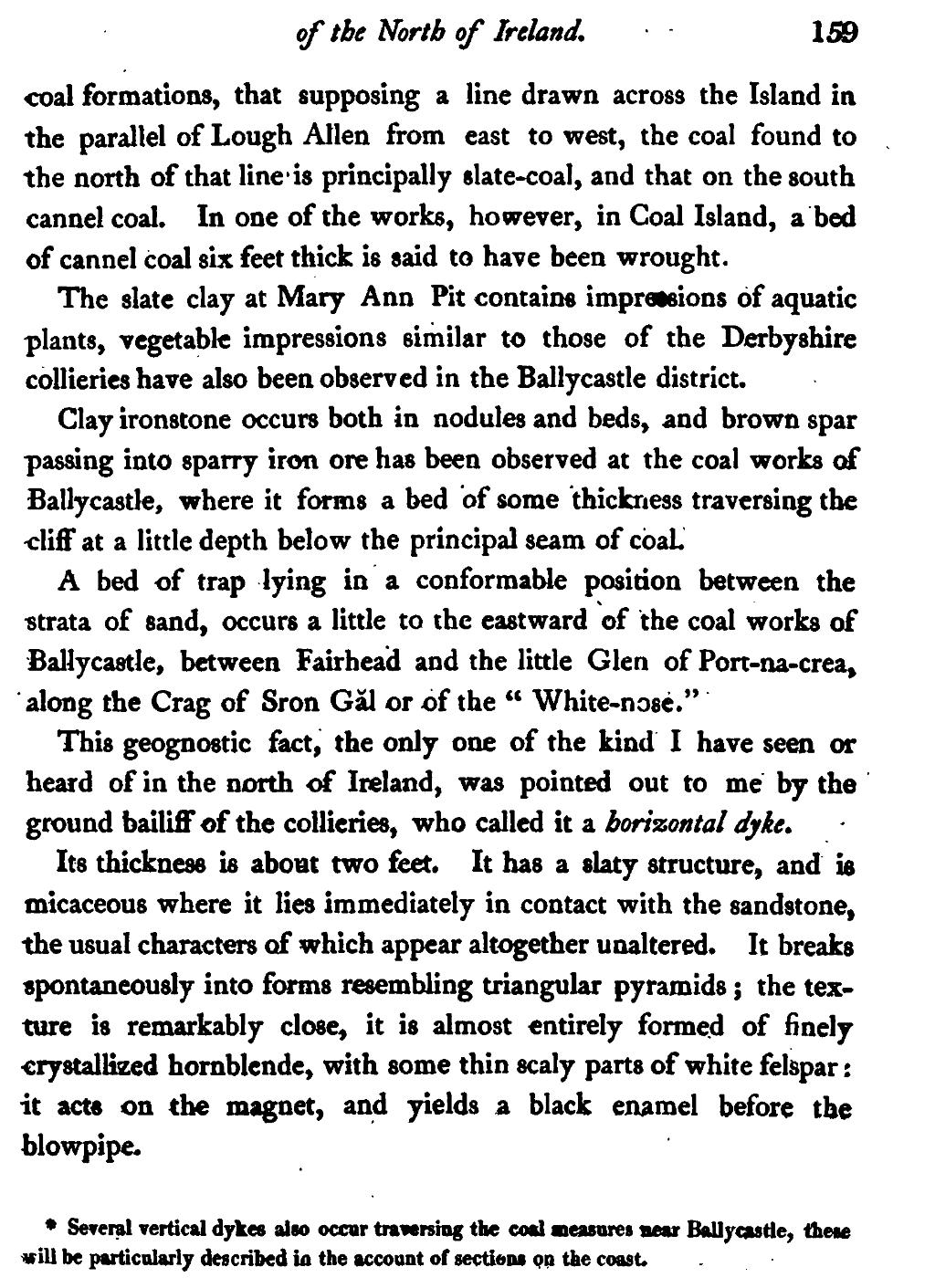coal formations, that supposing a line drawn across the Island in the parallel of Lough Allen from east to west, the coal found to the north of that line is principally slate-coal, and that on the south cannel coal. In one of the works, however, in Coal Island, a bed of cannel coal six feet thick is said to have been wrought.
The slate clay at Mary Ann Pit contains impressions of aquatic plants, vegetable impressions similar to those of the Derbyshire collieries have also been observed in the Ballycastle district.
Clay ironstone occurs both in nodules and beds, and brown spar passing into sparry iron ore has been observed at the coal works of Ballycastle, where it forms a bed of some thickness traversing the cliff at a little depth below the principal seam of coal.
A bed of trap lying in a conformable position between the strata of sand, occurs a little to the eastward of the coal works of Ballycastle, between Fairhead and the little Glen of Port-na-crea, along the Crag of Sron Gal or of the “ White-nose.”
This geognostic fact, the only one of the kind I have seen or heard of in the north of Ireland, was pointed out to me by the ground bailiff of the collieries, who called it a horizontal dyke.
Its thickness is about two feet. It has a slaty structure, and is micaceous where it lies immediately in contact with the sandstone, the usual characters of which appear altogether unaltered. It breaks spontaneously into forms resembling triangular pyramids; the texture is remarkably close, it is almost entirely formed of finely crystallized hornblende, with some thin scaly parts of white felspar: it acts on the magnet, and yields a black enamel before the blowpipe.
* Several vertical dykes also occur traversing the coal measures near Ballycastle, these will be particularly described in the account of sections on the coast.
